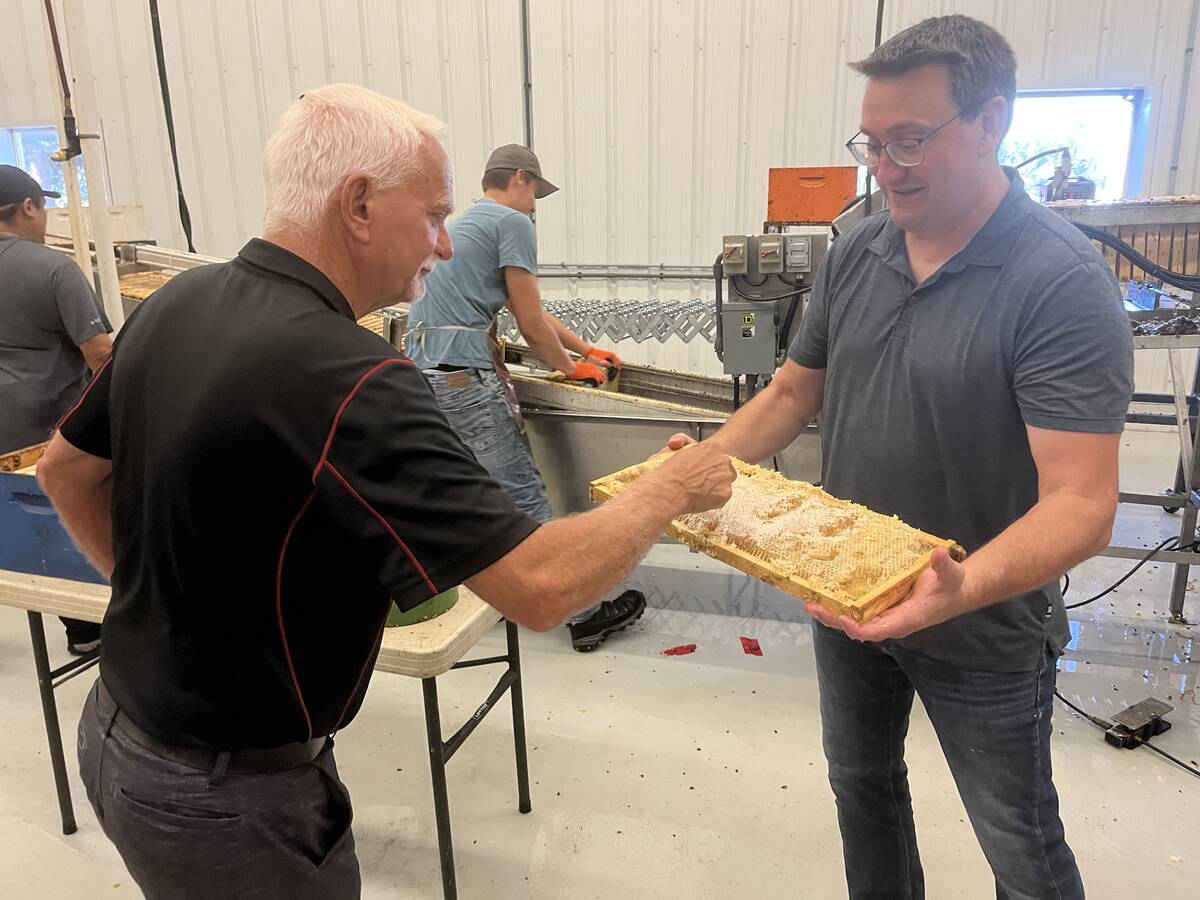Q: My 34-year-old daughter has had trouble with ingrown toenails on both big toes for most of her adult life. Sometimes they get infected and she has trouble wearing shoes. I have told her not to mess around with them and see a podiatrist. Do you have any advice?
A:Ingrown toenails can be a real problem and often are long lasting. This condition is then known as chronic paronychia, where there is evidence of long-term inflammation, thickening and pus formation, with the loss of the cuticle.
Read Also

Alberta honey business ‘thrives’ despite bumpy beginnings
Thrive Honey showcases its honey production in market where Alberta produces 40 per cent of all honey produced in the country
I think she should visit a podiatrist, who would be able to cut her nails properly and tell her how to prevent ingrown toenails. One trick is to cut the nail straight across, not around the curves.
Another suggestion is to cut a small V in the centre of the nail, so that as the nail grows, it pulls toward the centre and away from the edges. The only problem with this approach is that the notch tends to snag panty hose. She may have to wear socks for a while.
Abscess formation in the same region can be painful. The doctor will use a thick needle or small scalpel blade to separate the cuticle from the nail, which will drain the abscess. There is no need for freezing or local anesthetic because no cut is made. A wick may be slid into the opening to ensure continuous drainage. She will probably be given antibiotics and told to soak her feet for 20 minutes in warm water four times a day.
Since your daughter’s situation is chronic, a more aggressive approach may be needed. In this case, a portion of the side of the nail is cut out, along with the underlying nailbed, right to the bone. The toe must first be frozen with local anesthetic. Although this method sounds painful, it is better than living with chronic ingrown toenails, and it is more likely to be a permanent cure.
Sleep apnea
Q:What is obstructive sleep apnea? Is it the same as snoring?
A: Obstructive sleep apnea means your sleep is interrupted by snoring, which can wake you up as often as 100 times a night. Obstructed breathing usually is due to conditions such as nasal allergies, polyps or a cold. Sometimes breathing may actually stop for a few seconds. Sufferers tend to be tired during the day, and could fall asleep at work or while driving.
If the situation becomes chronic, a useful machine is the CPAP – continuous positive airway pressure. A mask is worn at night with a tube leading to a compressed air tank. The tube delivers a continuous flow of air, which helps you breathe normally while sleeping.
















